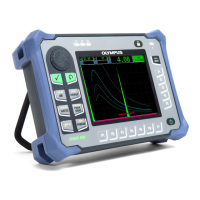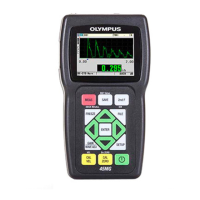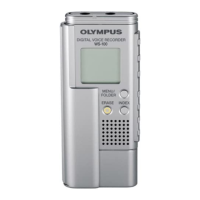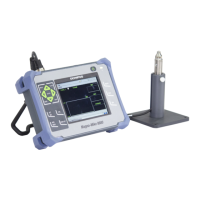DMTA-10055-01EN, Rev. A, February 2015
Glossary
325
Immersion testing A test method in which a water bath or a water column is
used to couple sound energy from the transducer to the
test piece. It is commonly used in automated scanning
applications.
Incidence, angle of The angle between a sound beam striking an acoustic
interface and the normal (perpendicular) orientation to the
surface at that point. Usually designated by the Greek
symbol α (alpha).
Indication A displayed signal signifying the presence of a sound
wave reflector.
Indication (defect)
level
The amount of gain which must be added to an
instrument setup to bring an indication (defect) echo
signal to peak at a selected reference level.
Leg In angle beam testing, the path the shear wave travels in a
straight line before being reflected by the opposite surface
of the material being tested.
Linearity, vertical or
amplitude
The degree to which an ultrasonic instrument responds in
a proportional manner to a range of echo amplitudes
produced by specified reflectors.
Linearity, horizontal
or distance
The degree to which an ultrasonic instrument responds in
a proportional manner to a range of echo signals produced
by specified reflectors at different points in time.
LOS Acronym for loss of signal.
Longitudinal wave Mode of wave propagation characterized by particle
movement parallel to the direction of wave travel.
Main bang Informal term for excitation pulse.
Mode conversion The change of a portion of sound beam energy into a wave
of a different mode due to refraction at incident angles
other than zero degrees. In NDT, this usually involves
conversion of longitudinal waves into shear waves or
surface waves.
Table 32 Glossary (continued)
Term Definition

